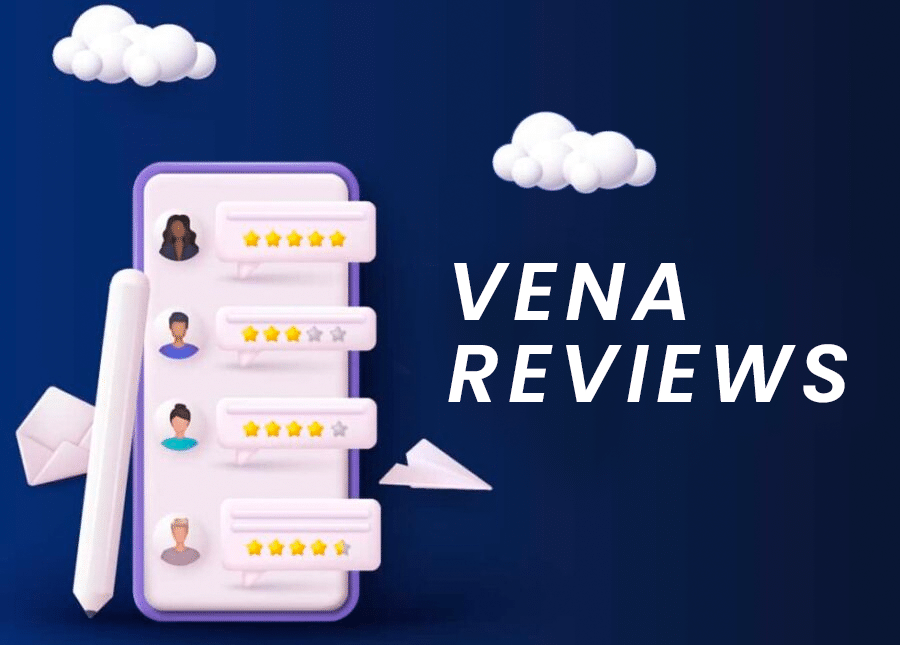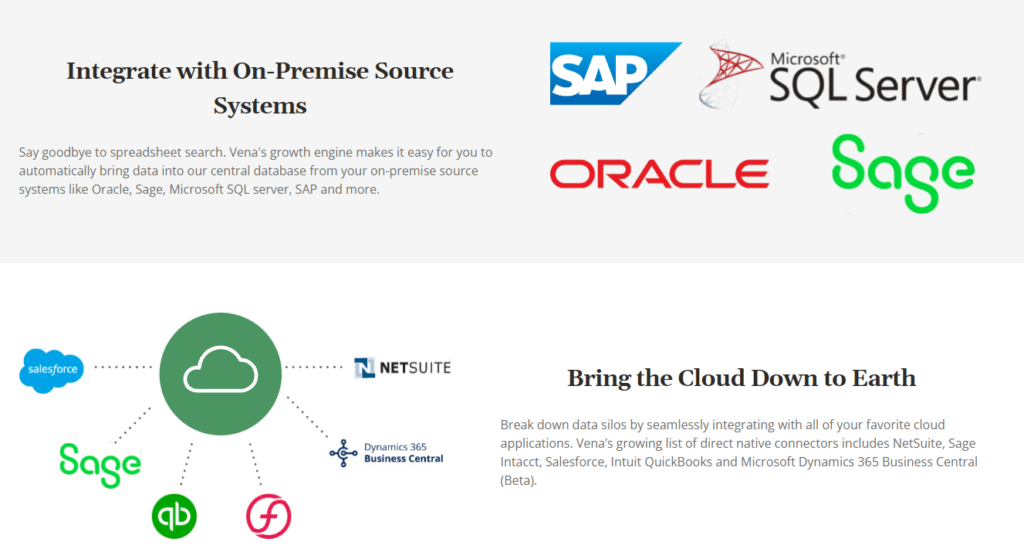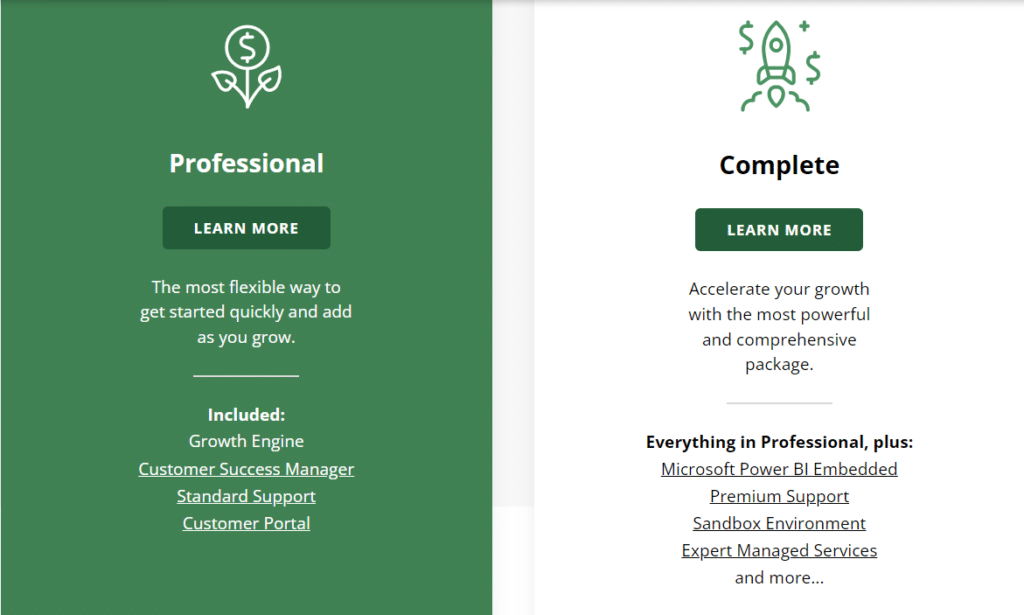
Vena Solutions is a cloud based FP&A software with an Excel interface. It integrates and secures data, improving aspects of the finance department (budgeting, forecasting, what-if analysis, and account reconciliation), making it one of the top planning platforms out there.
The choice of FP&A software is growing, and each one comes with its own pros and cons and target audience. Before making the costly and time-consuming decision of implementing an FP&A solution, it’s important to understand all of the features and pricing structures to make sure it will be the best fit for your company.
This page will review Vena’s features, pros and cons, customer feedback, pricing structures, and competitors.
Who is Vena for?
Vena Solutions is ideal for medium to large businesses and enterprises. Their customer base includes large corporations like Deloittle, White Castle, and the Kansas City Chiefs. Vena is a higher end and more costly solution than similar competitors (see alternative solutions below), and is a fit for businesses that are looking to enjoy future results through locking into a long term contract.
Let’s take a look at some of the reviews that customers have written about Vena:
Vena Reviews
After analyzing hundreds of reviews from different independent review sites, (G2, Capterra, Trustradius) we found that Vena stands out in a few ways:
- Time Saving – Many customers mentioned this as their favorite thing about Vena, and it’s no surprise. Too much manual work is usually a big factor in encouraging companies to implement FP&A solutions. Vena’s automation and consolidation greatly reduces the time it takes to conduct the month end close, budgeting, and forecasting.

- Good Customer Service and Support – Another positive, recurring review of Vena was their customer support. “Engaging with customers”, “listening to their customers”, “timely responses” and “helpful customer support” were some of the reviews that customers wrote on different review sites.
- Integrations – Many customers mentioned that Vena’s integrations and seamless connections, especially its finance integrations, were one of its strong points. This includes a large number of 3rd party integrations that are automatically connected and updated in real time.

Highlights of Vena’s Functions
- Centralized Database and Metrics – Vena’s OLAP database allows users to rely on one source of truth in collecting, analyzing, and sharing information from the company’s database and metrics.
- Editing control – Vena helps fix one of the biggest problems with spreadsheets – the lack of ownership and editing control. You can lock and secure templates, so you and everyone editing the same spreadsheet doesn’t have to guess where the numbers come from.
- Workforce Planning – Vena helps automate and consolidate one of every company’s biggest expenses – its employers. It includes a pre-built logic for calculating benefits and salaries, and helps with forecasts and headcount planning.
- Data Sharing – Vena has an ad-hoc report builder that can create sharable reports so that everyone on the team can be up to date and take action.
- Excel Interface – Vena is compatible with, and has, an Excel interface.
Vena Solutions Limitations (Based on Customer Reviews)
- Lengthy implementation time – Vena’s implementation time is notoriously longer than the competition. While the average implementation time for Vena is said to be about 8-10 weeks, in reality it can take double the amount of time or even more. Some customers have said that “Vena can be daunting/difficult to implement.”
In a success story written on Vena’s website, a customer was very happy to have the implementation done after “only 3 months”, while one customer on G2 said that their implementation “has not been finished after 8 months”. In comparison, Datarails has the majority of its customers implemented after 2 weeks.

- Long term commitment – Vena tends to push multi-year contracts, instead of yearly or monthly commitments. This is a lot of money to commit to without enough thoughts behind it. For example, Jedox provides a 14 day free trial and will give customers a much more detailed overview of their platform.
- Requires Coding – Vena relies on a third-party BI tool that requires coding to maintain. This makes it more complicated for people who don’t have coding knowledge that will need outside help. One customer said that a drawback for Vena was “That I need IT for implementation. I wish I could connect my ERP myself without so much technological background, like an import file.”
- High Costs – Vena’s costs will add up. This is not just because of the yearly price of the software, but due to all of the additional fees that they charge. Vena charges an implementation fee, an external services fee to deal with the coding, and a paid dedicated system administrator in order to maintain usage. One customer said that while the costs seemed low at first, “if we wanted any future changes or additions, we would have been forced to use their expensive consultants.”
- Slow Loading times – Dozens of customers have reported slow loading times from a long time to load templates (“We often have to wait about 2-3 minutes for a template to finish”) to the laggy Excel add-in (“The Excel add-in often runs slow, especially if multiple workbooks are open at the same time”) to the extremely slow quick access pivot table (“quick access Pivot Table through OLEDB connection is slow to the point it’s virtually non-functional”).
- Audit and Security Concerns – Last year, Vena made headlines in the FP&A world due to a customer (large, publicly traded company) claiming that their SOC reports were not independently audited, even though Vena claimed they were. While Vena didn’t confirm or deny it, they did say there “was an issue relating to SOC reports”. Many customers became concerned as SOC reports are very important in independent auditing.
Vena Pricing
Vena does not provide pricing on their website, but they break it down into 2 different tiers, “Professional” and “Complete”. They also provide different pricing for non profit organizations. Among these tiers there will be individualized quotes as well. Keep in mind that it does not include the additional implementation, consulting, and third party management fees.
The price will also depend on the amount of administrators, contributors, and view only that your company wants to include in the plan.

Vena Alternatives
1) Datarails
Datarails and Vena often come up as two of the top FP&A solutions – especially in the category of native Excel software. Let’s take a look at some of the key differences between Datarails and Vena.
Datarails vs Vena Differences:
- Datarails is completely native Excel and allows customers to use their own Excel models – With Datarails, customers can bring in their own Excel models and source data in any way. Vena has a rigid template that requires coding and a lot of outside help to change models.
- Datarails charges less additional fees – Vena charges high implementation fees, additional fees for a dedicated system administrator, and professional third party service fees for the complex coding that needs to be done.
- No need to learn coding or Power BI with Datarails – Datarails’ intuitive platform is built for those who know Excel, with no need to do anything more. With Vena, despite the Excel familiarity, the platform still relies on a third-party BI tool that requires coding and ETL channel maintenance.
- Datarails has a much shorter implementation time – Datarails integrates most of its users in under 2 weeks. With Vena, the process usually takes a minimum of 3 months, sometimes far more.
- Datarails is trusted and secure – Datarails passed QuickBooks lengthy and rigid partnership security review to become official marketplace partners. Vena integrates with QuickBooks but is not an official partner because they didn’t conduct the security review. Furthermore, Vena’s SOC reports have made headlines because customers claimed that the independent audits were actually not done independently and this compromised their security.
In summary, Datarails is a more flexible, easier-to-use model that encourages independence from the beginning by allowing customers to keep their familiar models and implement the software quickly. Vena is a more rigid platform that is meant for large finance teams looking for long term results.
Datarails cons:
- Datarails is built for SMBs, SMEs, and enterprises (up to 2,000 employees). It is not meant for large enterprises and corporations with over 2,000 employees.
- Customer base is concentrated in the US, Canada, and the UK.
For a full list of Datarails customer reviews click here.
2) Cube Software
Cube Software is another Excel based FP&A tool that is often evaluated by finance teams. The main difference between Cube and Vena is that Cube is meant for small businesses with a limited finance function, while Vena is meant for larger organizations. Let’s take a closer look at some more detailed differences between Cube and Vena.
Cube vs. Vena Differences:
- Cube has a native Google Sheets integration – Cube’s native Google Sheets integration makes it attractive for heavy Google Sheets users. Vena focuses on Excel and is limited in functionality when using Google Sheets.
- Cube has direct ERP integrations – Both Cube and Vena have many 3rd party integrations, including ERP integrations. But Vena’s platform doesn’t directly integrate with any enterprise resource planning (ERP) tools, making it harder to share valuable data between these systems.
- Cube has an easier integration – Due to Cube’s customers being mostly small companies with limited finance teams, it tends to take around 8-10 weeks for full implementation, while Vena is usually a lot longer (4-6 months).
Cube Cons:
- Limited dimensions – Cube’s limited number of dimensions makes it difficult to do flexible reporting or keep existing models that companies used pre-Cube. This is because Cube uses an OLAP database where all of the data is in predefined data cubes. Furthermore, Cube has a limit of only 8 data cubes (4 predefined cubes such as HR data and finance data must go in their data cubes, and only 4 additional flexible data cubes). Our research found that limited data dimensions is the reason why 54% of customers choose Datarails over Cube.
- Slow processing times – With problematic OLAP databases used by Cube (and Vena), each additional data cube dimension adds a cumbersome load on the processing time. Since each data cube relates to each other, the more data cubes there are, the more delays and lengthy loading times it causes. According to reviews, Cube’s processing and loading time is faster than Vena’s, but many customers still run into problems with Cube’s slow processing, especially after adding additional data cubes.
- Additional hidden fees and no free trial – Similar to Vena, Cube tends to add on fees to their software price. A consulting fee ( $250 per month for 4 hours) and implementation fee (averages between $5,000- $10,000) are consistent fees that are added on. Cube also does not provide any free trial, so companies need to be certain that it is the right fit before signing.
- Cube is a starter FP&A software – For companies that are growing or scaling fast, Cube is less optimal, (although Cube fits for small companies and small startups). When companies hit a certain size, Cube is unlikely to be able to meet their reporting requirements and they will need to find a new FP&A software.
3) Planful
Planful is another top FP&A software company. Although it doesn’t have the fully native Excel functionality of Datarails or the Excel interface of Cube and Vena, many users enjoy their “Excel like” features.
Planful automates much of the manual work in the finance department and aligns planning processes in order to help companies take action and drive performance. Let’s take a look at some of the key features of Planful and how they compare with Vena.
Planful vs. Vena Differences:
- AI Capabilities – Planful Predict, along with Datarails’ AI, FP&A Genius, are two companies leading the AI development in FP&A. According to their website “Planful Predict checks for errors, identifies patterns, and augments your efforts with intelligent forecast recommendations using a natively integrated artificial intelligence engine.” This is one big advantage over Vena.
- Drag and drop capabilities – Many Planful reviews show that users enjoy the ease of the drag and drop capabilities, especially in comparison to Vena Solutions.
- Strong data structures and fast processing times – Another aspect that stands out with Planful, especially in comparison to Vena, is the strong data structures and fast processing times. Although it is a complicated tool to learn, once it’s implemented Planful is responsive and the data structures are strong and rigid.
Planful Cons:
- Although Planful is Excel-like, it is not native Excel and far behind the other software options in this category. This means that the tool is extremely rigid and companies need to give up their existing models and templates when they adopt Planful. The rigidity also leads to other downsides.
- High learning curve and needs third party help for implementation – The rigid platform can be quite confusing according to many reviews, and causes a few difficulties: 1) long implementation times (6 months or more) similar to or even greater than Vena. 2) Due to the complexity, any change requires outside support. 3) Rigidity makes internal collaboration a challenge because only those that know the platform can really contribute or understand.
- Expensive – Planful charges internal and external consulting fees, additional customer support fees, and a pay-per-user policy.
Conclusion
Vena Solutions is a leading FP&A software solution with an impressive list of features and customers. Many reviews show the value Vena provides finance teams by reducing manual work, increasing collaboration, and providing valuable insights.
Vena works best for:
- Large businesses with strong FP&A teams.
- Finance teams looking to adopt new Excel models
- Companies looking for a long term contract commitment and long term results
- Finance teams that do their own coding and ETL channel maintenance.
But Datarails is a better fit for a finance teams looking for an FP&A solution that provides:
- Completely native Excel that doesn’t require coding knowledge and allows users to bring their own Excel models.
- Very short implementation time (2 weeks) and a tool built for flexibility and independence.
- A solution meant for scalability and growth.
- Unlimited dimensions.
- Easy to use workflows and audit control.